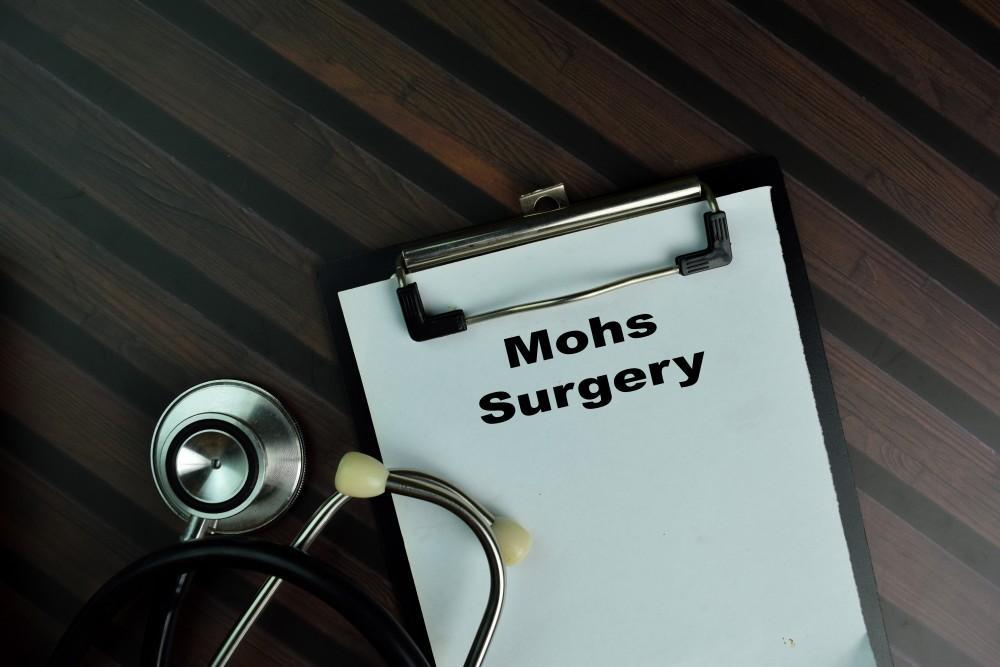
Mohs Surgery: Here's How it Works

Did you know around 10,000 American adults are diagnosed with skin cancer every day? If you’ve learned you have skin cancer, chances are good your provider will recommend innovative Mohs surgery to remove the cancer.
At Manhattan Dermatology in New York City, our board-certified dermatologists use Mohs surgery to remove cancerous skin tissue while preserving as much of your healthy tissues as possible. This surgical technique also leaves you with less scarring and higher remission levels.
Keep reading to learn more about this therapy and what you can expect after Mohs surgery.
How Mohs surgery works
During Mohs surgery, we use specialized surgical techniques to remove the cancerous areas of your skin while preserving as much healthy tissue as possible.
We map the cancer, or excise one thin layer at a time, and carefully examine the area surrounding the skin cancer (the margins). We study each removed layer in our on-site lab and repeat the process until all traces of cancerous tissue are gone.
After your appointment, you leave with healthy, cancer-free skin. And because we removed only the areas containing cancer, you have less scarring, better cosmetic results, faster recovery, and amazing cure rates — 99% for newly diagnosed skin cancer and 94% for recurring skin cancers.
What happens after Mohs surgery
You receive post-surgery instructions after your Mohs surgery. These instructions depend on the location and size of your skin cancer as well as how much tissue we needed to remove.
Depending on these factors, you may leave our offices with:
- A bandage only
- Sutures or stitches
- Reconstructive surgery (same-day or instructions for a future date)
You might have bruising, swelling, minor bleeding, or oozing. Most people manage any pain or discomfort with over-the-counter nonsteroidal anti-inflammatory drugs (NSAIDs), like ibuprofen, and at-home treatments, like cold compresses or ice packs.
Recovery process after Mohs surgery
The time it takes to recover depends on your age, the extent of the cancer, your overall health, and other factors, such as the location and type of your cancer. Most of the time, we remove the stitches 5-14 days after your procedure, but it can take longer for your skin to fully heal.
You can expect to be able to return to routine daily activities the same day or the day after your surgery. We may advise you to avoid certain movements depending on the size of your treatment area. This could include avoiding:
- Vigorous exercise
- Heavy lifting
- Bending
- Any activity that might risk opening the wound
You can also expect a small area around your surgical site to feel numb for several weeks or months. This is normal and is a result of damage to the nerve endings in your skin when we cut out the cancerous tissue.
For some people, this numbness becomes permanent. But for most people, it resolves and normal feeling returns as your skin heals.
Complications after Mohs surgery
It’s rare to experience serious complications after Mohs surgery. But certain symptoms can mean you need to see your dermatologist sooner rather than later to avoid infection or other issues.
Call our surgical team as soon as possible if you experience any of the following issues after Mohs surgery:
- New or worsening bleeding
- Pus or worsening drainage or oozing
- Severe pain or pain that worsens instead of improves
- Fever, nausea, or vomiting
- Problems, questions, or concerns with wound care
Are you ready to learn more about what you can expect after Mohs surgery? Schedule an appointment online or over the phone at either our Murray Hill or Midtown East location in Manhattan, New York City.
You Might Also Enjoy...


5 Tips to Make the Most Out of Botox® Treatments

Does Psoriasis Run in Families?

Do I Really Need Treatment for Basal Cell Carcinoma?

Are All New Moles in Adulthood Cancerous?


